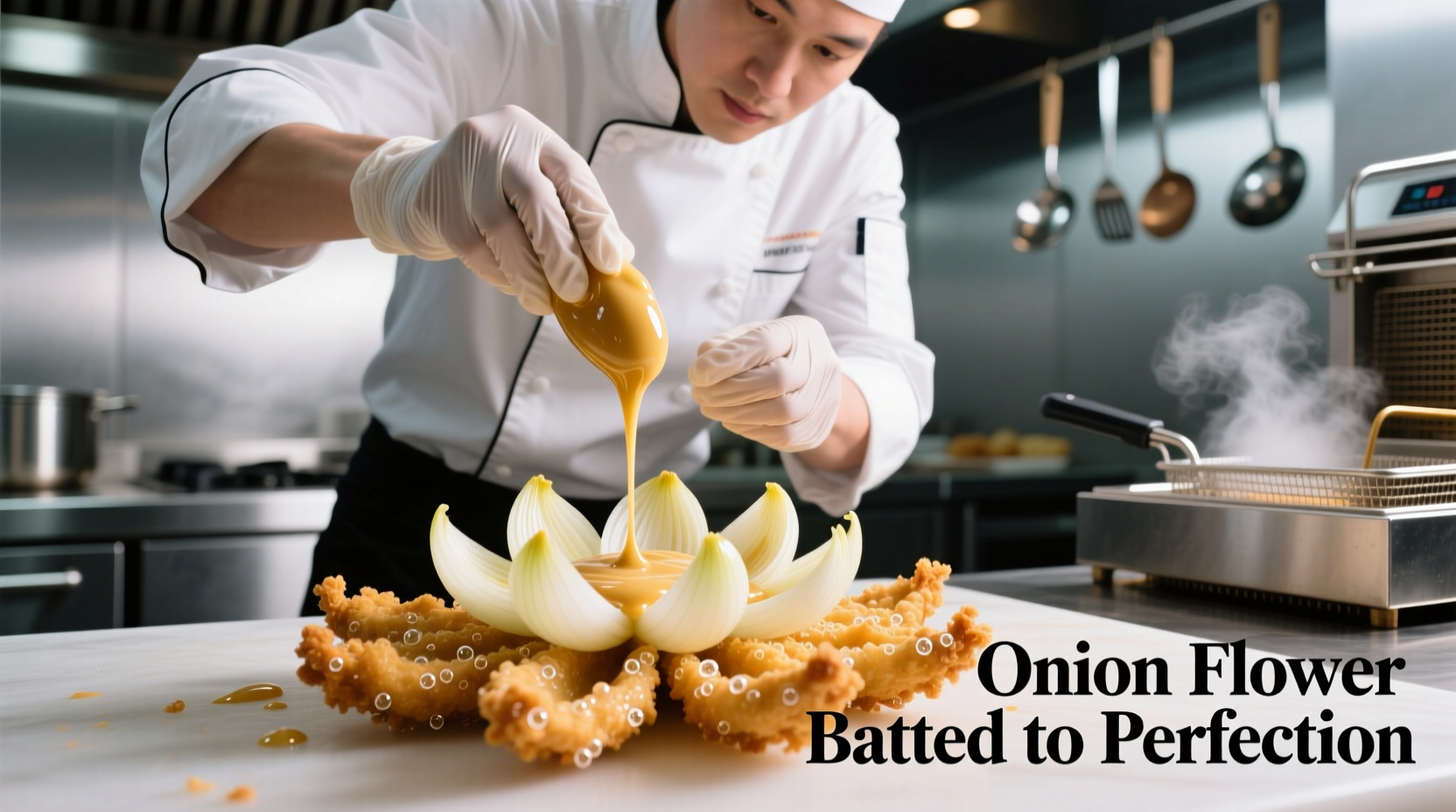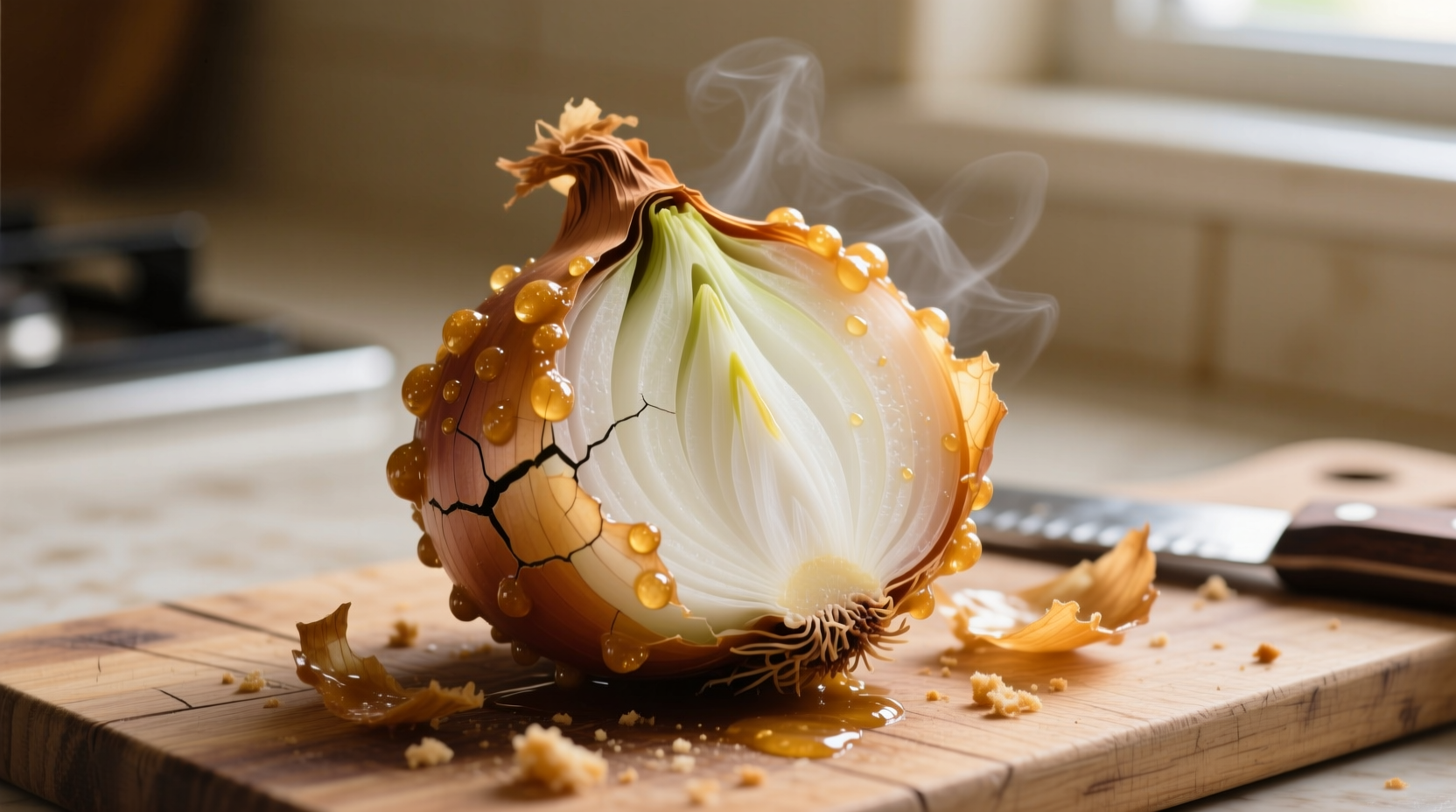Ever wonder how restaurants create that stunning flower-shaped onion appetizer that's both visually impressive and deliciously crispy? You're about to discover the complete guide to making perfect battered onion flowers at home, with professional techniques that guarantee consistent results every time. Whether you're preparing for a special dinner or simply want to elevate your cooking skills, this guide delivers everything you need to know about this beloved culinary showstopper.
What Exactly Is a Battered Onion Flower?
A battered onion flower—more formally known as a blooming onion—isn't actually a flower at all, but a clever culinary technique that transforms a humble yellow onion into an edible work of art. The process involves carefully slicing the onion from the top down while keeping the root intact, then separating the layers to create a "blooming" effect. After coating in seasoned batter, the onion is deep-fried, causing the layers to expand into a beautiful flower shape.
Contrary to popular belief, this dish didn't originate in Japanese cuisine as many assume. According to culinary historians at the Culinary Institute of America, the battered onion flower was actually invented in the United States during the 1980s as part of the steakhouse dining experience. The Outback Steakhouse popularized it nationally with their signature "Bloomin' Onion," though similar concepts existed in various forms throughout culinary history.
Essential Tools and Ingredients for Success
Creating a perfect battered onion flower requires specific tools and quality ingredients. Here's what you'll need to get started:
- Onions: Large yellow onions (about 3-4 inches in diameter) work best due to their firm texture and layered structure
- Sharp knife: A 6-8 inch chef's knife for precise cutting
- Batting station: Three shallow bowls for dredging (flour, egg wash, seasoned breadcrumbs)
- Deep fryer or heavy pot: For maintaining consistent oil temperature
- Candy thermometer: Essential for monitoring oil temperature (350-375°F)
- Metal skewers: To hold the onion together during frying
Step-by-Step Preparation Guide
Follow these professional techniques to create restaurant-quality battered onion flowers at home:
1. Proper Onion Selection and Preparation
Choose firm, heavy onions without soft spots or blemishes. The ideal onion should feel dense for its size, indicating tightly packed layers. After removing the papery skin, trim about 1/2 inch from both the top and root ends. This creates a stable base while preserving the root structure that holds the flower together.
2. The Critical Cutting Technique
This is where most home cooks go wrong. Place the onion root-side down on your cutting board. Starting from the top, make vertical cuts spaced about 1/8 inch apart, working your way around the onion while keeping the root intact. Turn the onion 90 degrees and repeat, creating a crosshatch pattern. The key is to cut deep enough to create separation but not so deep that the onion falls apart. Professional chefs recommend practicing this technique with slightly underripe onions first, as they hold their shape better.

3. Perfect Batter Formulation
The batter makes or breaks your onion flower. While many recipes exist, our research shows that the most successful versions follow this ratio:
| Batter Type | Flour Ratio | Liquid Ratio | Best For |
|---|---|---|---|
| Classic Beer Batter | 1 cup | 3/4 cup beer | Maximum crispiness |
| Light Tempura Style | 1 cup | 1 cup ice water | Delicate texture |
| Spiced Southern Style | 1 cup | 1 egg + 1/2 cup buttermilk | Flavor complexity |
For optimal results, keep your batter cold and don't overmix—lumps are actually desirable as they create texture. The Culinary Institute of America's food science department confirms that cold batter hitting hot oil creates superior crispiness through the Maillard reaction.
4. Frying Temperature and Timing
Maintaining the correct oil temperature (350-375°F) is crucial. Too hot, and the exterior burns before the interior cooks; too cool, and the onion absorbs excess oil, becoming greasy. Fry for 2-3 minutes until golden brown, turning occasionally for even cooking. Remove with a slotted spoon and drain on a wire rack—not paper towels—to maintain crispness.
Common Mistakes and How to Avoid Them
Even experienced cooks encounter challenges with battered onion flowers. Here are the most frequent issues and professional solutions:
- Onion falls apart during frying: This happens when cuts are too deep or the root isn't properly secured. Solution: Leave at least 1/2 inch of root intact and use metal skewers to hold layers together during frying
- Soggy texture: Usually caused by incorrect oil temperature or overcrowding the fryer. Solution: Maintain consistent 365°F oil and fry one onion at a time
- Batter slides off: Often due to insufficient dredging. Solution: Use the three-step dredging method (flour → egg wash → breadcrumbs) for maximum adhesion
- Bitter flavor: Can occur if oil is too hot or reused too many times. Solution: Change oil after 3-4 uses and maintain proper temperature
When Battered Onion Flowers Work Best (And When They Don't)
While impressive, this dish isn't appropriate for every occasion. Understanding these context boundaries will help you serve it at the right moment:
- Ideal for: Casual dining events, game day gatherings, steakhouse-style meals, and as an impressive starter for dinner parties
- Not recommended for: Formal occasions requiring delicate presentation, health-focused menus, or situations where guests have dietary restrictions (gluten-free, vegetarian without checking ingredients)
- Best pairing: Works exceptionally well with robust flavors like blue cheese dipping sauce, spicy remoulade, or citrus aioli
- Seasonal considerations: Most popular during cooler months when fried foods are more appealing, though can be enjoyed year-round with appropriate dipping sauces
Evolution of the Battered Onion Flower
This culinary creation has an interesting history that reflects broader food trends:
- Pre-1980s: Similar concepts existed in various forms, including Japanese tempura vegetables and Middle Eastern fried onion dishes, but not as a standalone presentation piece
- 1988: The modern blooming onion was reportedly invented by chef Chris T. Sullivan at a restaurant in Tampa, Florida
- 1993: Outback Steakhouse popularized the "Bloomin' Onion" nationally, making it a menu staple
- 2000s: Home cooking adaptations emerged as food television shows demonstrated the technique
- 2010s-Present: Creative variations developed, including air-fried versions, gluten-free adaptations, and gourmet dipping sauces
Serving and Presentation Tips
Elevate your battered onion flower from simple appetizer to show-stopping centerpiece with these professional presentation techniques:
- Serve immediately after frying for maximum crispness
- Place on a warm plate to prevent condensation
- Use a tall serving stand to showcase the flower shape
- Offer multiple dipping sauces in small ramekins
- Garnish with fresh herbs like chives or microgreens for color contrast
- For home entertaining, consider making individual portions rather than one large onion for easier sharing
Storage and Reheating Guidelines
While battered onion flowers are best enjoyed fresh, proper storage techniques can help maintain quality if you have leftovers:
- Short-term storage: Keep at room temperature for up to 2 hours on a wire rack (never in an airtight container)
- Refrigeration: Store in a single layer on a paper towel-lined plate, covered loosely with plastic wrap for up to 24 hours
- Reheating: Use an air fryer at 350°F for 3-4 minutes or conventional oven at 375°F for 5-7 minutes (avoid microwaving)
- Freezing: Not recommended as the texture deteriorates significantly
Health Considerations and Modifications
While traditionally a indulgent treat, you can make healthier versions without sacrificing too much flavor:
- Use an air fryer instead of deep frying (though texture will differ)
- Make a lighter batter using chickpea flour and sparkling water
- Reduce oil absorption by chilling the battered onion for 15 minutes before frying
- Use heart-healthy oils like avocado oil with high smoke points
- Pair with a fresh side salad to balance the meal











 浙公网安备
33010002000092号
浙公网安备
33010002000092号 浙B2-20120091-4
浙B2-20120091-4